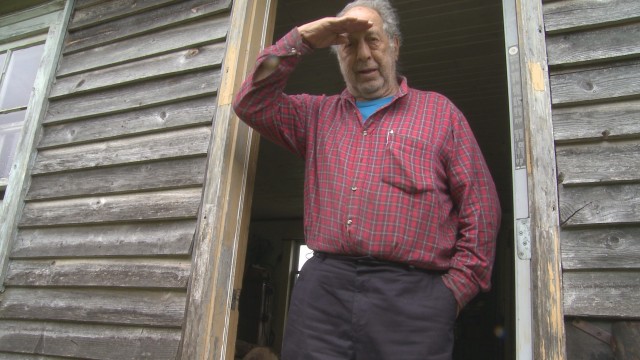
Robert Frank takes a unique look at his life and career in documentary made by his longtime editor
DON’T BLINK — ROBERT FRANK (Laura Israel, 2015)
Film Forum
209 West Houston St.
Opens Wednesday, July 13
212-727-8110
www.dontblinkrobertfrank.com
filmforum.org
 “I hate these fucking interviews,” innovative, influential, ornery, and iconoclastic photographer and filmmaker Robert Frank says while preparing to be interviewed in 1984; the scene is shown in Laura Israel’s new documentary, Don’t Blink — Robert Frank. “I’d like to walk out of the fucking frame,” he adds, then does just that. But in Don’t Blink, Frank finds himself walking once more into the frame as Israel, his longtime film editor, attempts to get him to open up about his life and career. Born in Zurich in 1924, Frank immigrated to the United States in 1947, became a fashion photographer, and had his artistic breakthrough in 1958 with the publication of the controversial photo book The Americans, which captured people unawares from all over the country, using no captions, just image, to get his point across. (In 2009, “The Americans”) was installed at the Metropolitan Museum of Art, in addition to a gallery show of related photographs at Pace/McGill.) In the film, Frank does talk about his past and present, discussing his time with such Beats as Jack Kerouac, Allen Ginsberg, William S. Burroughs, and Peter Orlovsky, which he displayed in the 1959 film Pull My Daisy, narrated by an improvising Kerouac and codirected by Alfred Leslie; touching on the tragic early deaths of his son and daughter; sharing details about his parents, including his father, whose hobby was photography; hanging out with his wife, fellow artist June Leaf; and delving into such influences as Walker Evans and his creative process, which is not exactly complex. “Usually the first picture is the best one. Make sure they’re smiling, say cheese,” Frank says with a laugh, then adds, “The main thing is get it over, quick.” Israel takes that advice to heart, trying to get what she can out of Frank before he changes his mind; at first he didn’t want to participate in the film at all, but once he went with it, he also made sure to playfully battle with Israel over who was really in control.
“I hate these fucking interviews,” innovative, influential, ornery, and iconoclastic photographer and filmmaker Robert Frank says while preparing to be interviewed in 1984; the scene is shown in Laura Israel’s new documentary, Don’t Blink — Robert Frank. “I’d like to walk out of the fucking frame,” he adds, then does just that. But in Don’t Blink, Frank finds himself walking once more into the frame as Israel, his longtime film editor, attempts to get him to open up about his life and career. Born in Zurich in 1924, Frank immigrated to the United States in 1947, became a fashion photographer, and had his artistic breakthrough in 1958 with the publication of the controversial photo book The Americans, which captured people unawares from all over the country, using no captions, just image, to get his point across. (In 2009, “The Americans”) was installed at the Metropolitan Museum of Art, in addition to a gallery show of related photographs at Pace/McGill.) In the film, Frank does talk about his past and present, discussing his time with such Beats as Jack Kerouac, Allen Ginsberg, William S. Burroughs, and Peter Orlovsky, which he displayed in the 1959 film Pull My Daisy, narrated by an improvising Kerouac and codirected by Alfred Leslie; touching on the tragic early deaths of his son and daughter; sharing details about his parents, including his father, whose hobby was photography; hanging out with his wife, fellow artist June Leaf; and delving into such influences as Walker Evans and his creative process, which is not exactly complex. “Usually the first picture is the best one. Make sure they’re smiling, say cheese,” Frank says with a laugh, then adds, “The main thing is get it over, quick.” Israel takes that advice to heart, trying to get what she can out of Frank before he changes his mind; at first he didn’t want to participate in the film at all, but once he went with it, he also made sure to playfully battle with Israel over who was really in control.
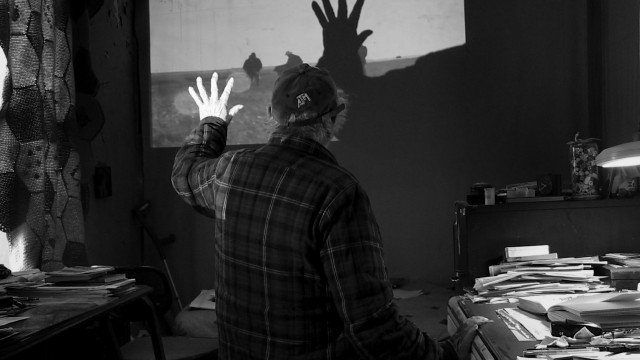
Robert Frank has fun with some of his old films in DON’T BLINK
Israel (Windfall) does not tell Frank’s story chronologically but instead relies on a kind of thematic wandering through his life, intercutting old lectures, interviews, home movies, and photographs with clips from such Frank films as Conversations in Vermont, About Me: A Musical, Energy and How to Get It, Candy Mountain, One Hour, and Paper Route. Israel spends the most time on Cocksucker Blues, an unreleased work about the Rolling Stones on tour in 1972 (and about which Mick Jagger told Frank, “It’s a fucking good film, Robert, but if it shows in America we’ll never be allowed in the country again”), and Me and My Brother, which focuses on Julius Orlovsky, Peter Orlovsky’s brother, who suddenly awakened from a catatonic state and had some fascinating things to say. Just as Frank’s films went back and forth between color and black-and-white and avoided conventional storytelling methods, Israel does the same with Don’t Blink, using offbeat angles, also switching between color and black-and-white, and incorporating other deft touches that lend insight to Frank, who is now ninety-one and still has disheveled hair, and his work, especially when he’s taking Polaroids and scratching and painting on the back of the pictures. (Alex Bingham served as both editor and art director, while the cinematography is by Lisa Rinzler.) The film’s fierce soundtrack meshes well with Frank’s independent streak, with songs by the Velvet Underground, Bob Dylan, the Mekons, New Order, the Kills, Yo La Tengo, Patti Smith, Johnny Thunders, the White Stripes, and Tom Waits, many of whom Israel has made music videos for. Perhaps at the heart of Frank’s methodology is what he calls “spontaneous intuition,” something that works for both life and art and helps propel Israel’s warmhearted but never worshipful documentary; their camaraderie is evident in nearly every frame. Don’t Blink — Robert Frank opens July 13 at Film Forum, with Israel participating in Q&As following the 8:00 screening on July 13 with author Nicholas Dawidoff, after the 8:00 screening on July 15 with Bingham, Rinzler, and producer Melinda Shopsin, and at the 4:15 show on July 17 with Ed Lachman, the award-winning DP who has shot several Todd Haynes films and is credited with additional camera on Don’t Blink. And as a bonus, Film Forum will be showing the rarely screened Cocksucker Blues at 9:50 on July 20 and 21. (Don’t Blink also serves as excellent preparation for the upcoming BAMcinématek survey “The Films of Robert Frank,” which consists of twenty-five works by Frank screened on Thursday nights August 4 through September 22.)
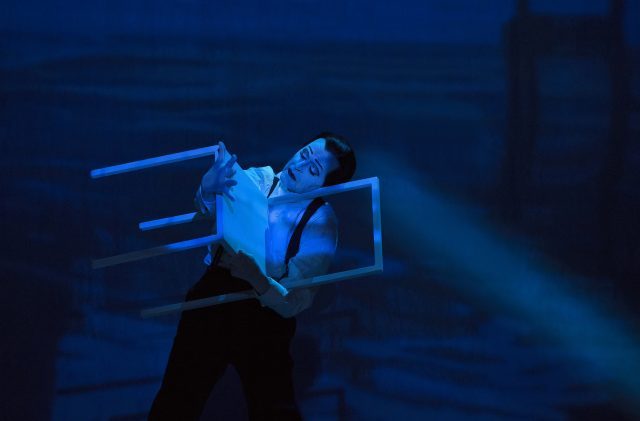

 “I hate these fucking interviews,” innovative, influential, ornery, and iconoclastic photographer and filmmaker Robert Frank says while preparing to be interviewed in 1984; the scene is shown in Laura Israel’s new documentary, Don’t Blink — Robert Frank. “I’d like to walk out of the fucking frame,” he adds, then does just that. But in Don’t Blink, Frank finds himself walking once more into the frame as Israel, his longtime film editor, attempts to get him to open up about his life and career. Born in Zurich in 1924, Frank immigrated to the United States in 1947, became a fashion photographer, and had his artistic breakthrough in 1958 with the publication of the controversial photo book The Americans, which captured people unawares from all over the country, using no captions, just image, to get his point across. (In 2009,
“I hate these fucking interviews,” innovative, influential, ornery, and iconoclastic photographer and filmmaker Robert Frank says while preparing to be interviewed in 1984; the scene is shown in Laura Israel’s new documentary, Don’t Blink — Robert Frank. “I’d like to walk out of the fucking frame,” he adds, then does just that. But in Don’t Blink, Frank finds himself walking once more into the frame as Israel, his longtime film editor, attempts to get him to open up about his life and career. Born in Zurich in 1924, Frank immigrated to the United States in 1947, became a fashion photographer, and had his artistic breakthrough in 1958 with the publication of the controversial photo book The Americans, which captured people unawares from all over the country, using no captions, just image, to get his point across. (In 2009, 
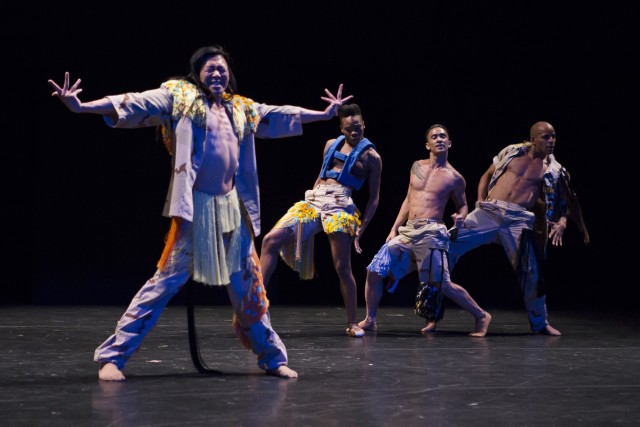
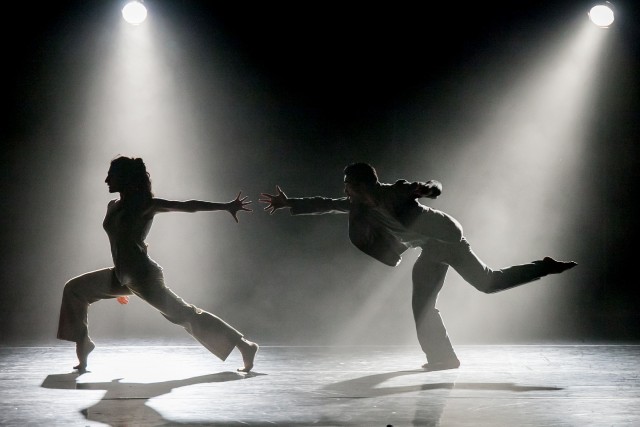
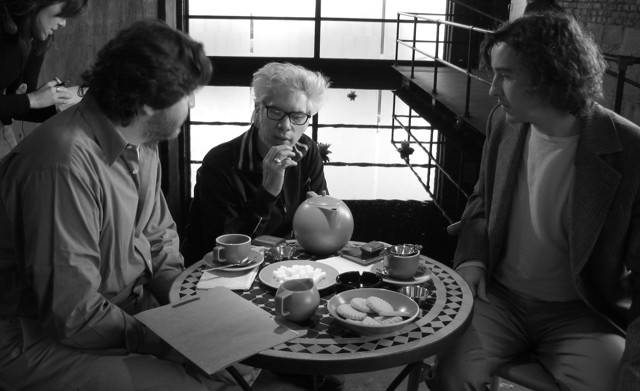
 Jim Jarmusch’s entertaining, offbeat, and often frustrating Coffee & Cigarettes consists of eleven vignettes, filmed over the course of more than fifteen years, that pair actors at bars, diners, and the like, drinking coffee, smoking cigarettes, and talking about drinking coffee and smoking cigarettes. Although the actors use their real names, they are put in fictional situations. While Steven Wright and Roberto Benigni are a hoot, Alex Descas and Isaach de Bankolé are annoying. Alfred Molina and Steve Coogan make the best team, while Iggy Pop and Tom Waits should have been better. So should GZA, RZA, and Bill Murray. Jack White and Meg White, despite a liking for Tesla, show they can’t act. Cate Blanchett with Cate Blanchett is okay but not as good as the riotous team of Joe Rigano and Vinny Vella. The film is a must-see for Jarmusch fans and those who need a nicotine/java jolt. All others beware. Coffee & Cigarettes is screening February 10 with The Garage Tapes, three shorts starring Waits, as part of the Film Society of Lincoln Center series “Permanent Vacation: The Films of Jim Jarmusch,” a tribute to the eclectic writer-director upon the occasion of the release of his latest work, Only Lovers Left Alive. The festival continues through April 10 with all of his feature films, which include such gems as Dead Man, Down by Law, Ghost Dog: The Way of the Samurai, Stranger than Paradise, Mystery Train, and Night on Earth.
Jim Jarmusch’s entertaining, offbeat, and often frustrating Coffee & Cigarettes consists of eleven vignettes, filmed over the course of more than fifteen years, that pair actors at bars, diners, and the like, drinking coffee, smoking cigarettes, and talking about drinking coffee and smoking cigarettes. Although the actors use their real names, they are put in fictional situations. While Steven Wright and Roberto Benigni are a hoot, Alex Descas and Isaach de Bankolé are annoying. Alfred Molina and Steve Coogan make the best team, while Iggy Pop and Tom Waits should have been better. So should GZA, RZA, and Bill Murray. Jack White and Meg White, despite a liking for Tesla, show they can’t act. Cate Blanchett with Cate Blanchett is okay but not as good as the riotous team of Joe Rigano and Vinny Vella. The film is a must-see for Jarmusch fans and those who need a nicotine/java jolt. All others beware. Coffee & Cigarettes is screening February 10 with The Garage Tapes, three shorts starring Waits, as part of the Film Society of Lincoln Center series “Permanent Vacation: The Films of Jim Jarmusch,” a tribute to the eclectic writer-director upon the occasion of the release of his latest work, Only Lovers Left Alive. The festival continues through April 10 with all of his feature films, which include such gems as Dead Man, Down by Law, Ghost Dog: The Way of the Samurai, Stranger than Paradise, Mystery Train, and Night on Earth.